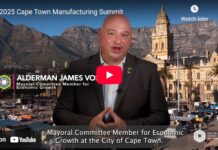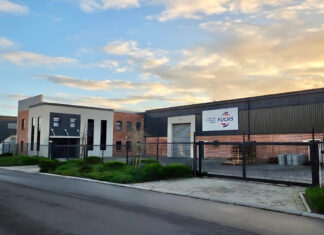Interest in wind energy has gained significant momentum in South Africa, driven by recent policy reforms and growing private sector demand, opening up new opportunities for investment. Private sector projects like Discovery Green in the Western Cape, Seriti Green in Mpumalanga, and Red Rocket in the Overberg are set to add nearly 700 MW of privately financed, wheeled wind power to South Africa’s energy mix, which will significantly bolster the country’s renewable energy capacity. However, lack of grid infrastructure could prove to be a stumbling block in unlocking this potential, as there is a current shortage of transmission capacity to connect these new wind projects to the national grid.
Unlocking opportunity
Wind power was under-represented in the latest government procurement rounds, as they focused heavily on solar. However, there remains a massive opportunity for wind power to contribute meaningfully to South Africa’s energy mix and large-scale, privately financed projects are emerging to take advantage. Among them is the Overberg wind farm, developed by Red Rocket in the Western Cape. With a planned capacity of 380 MW and the first 242 MW phase reaching financial close in early 2025, it will be South Africa’s largest privately driven wind project once complete. The project is backed by a 20-year power purchase agreement with Richards Bay Minerals and will deliver power through a wheeling arrangement on Eskom’s grid.
Also contributing to this shift are the Discovery Green and Seriti Green wind farms. Discovery Green’s 150 MW wind project in the Western Cape is designed to supply corporate customers directly via wheeling agreements. Meanwhile, Seriti Green’s 155 MW Ummbila Emoyeni wind farm in Mpumalanga will provide around 75% of Seriti Resources’ coal operations’ energy needs. Together, these three projects will inject 685 MW of new wind capacity into the national grid. Wheeling strategies are key in delivering this wind power to customers, allowing Independent Power Producers (IPPs) to directly deliver energy generated to their customers. However, to fully realise the potential of this private-sector momentum, significant investment in transmission infrastructure will be needed to unlock grid access in renewable-rich regions.
The stumbling block to success
As wind power and wheeling are gaining traction, they are exposing a critical bottleneck: ageing and limited grid capacity. South Africa currently has a shortfall of around 14 000 km of transmission lines, and just 4 000 km has been shortlisted for upgrades, although no contracts have been issued. This is a key barrier to further adoption, not only of wind power but of any renewable energy solutions.
The International Energy Agency’s recent report, Building the Future Transmission Grid, highlights that this is not a uniquely South African problem. Demand for new transmission is surging globally, and grid infrastructure is struggling to keep pace with renewable deployment. According to the report, by mid‑2024 there were around 1 650 GW of wind and solar projects around the world stalled waiting for grid connection. These projects face indefinite delays unless grid expansion accelerates, but there are two major challenges: rising costs and long lead times for key equipment.
For South Africa, this means that despite a wealth of projects and interest, wheeling and full grid integration are constrained without urgent transmission upgrades, which will take time and require significant investment.
Accelerating and modernising South Africa’s grid
To unlock the full potential of renewable energy projects, fast-tracking grid capacity expansion is critical. For South Africa, this includes streamlining bureaucracy in transmission tenders, enabling projects to move quickly from planning to construction. The IEA report supports this requirement, highlighting that coordinated demand visibility, simplified permitting, and reformed procurement processes are essential to accelerate progress.
Alongside expansion, investing in modernisation and smart grid technologies can optimise existing infrastructure. Digital systems such as real-time monitoring, dynamic line rating, and automation help relieve bottlenecks and delay the need for costly large-scale grid buildouts.
To further strengthen the grid, South Africa should secure supply chain resilience by pursuing long-term contracts and bulk purchasing of key components like cables and transformers to combat global shortages and rising prices. Additionally, developing a skilled local grid workforce is vital. The IEA projects a global shortfall of 1.5 million grid-sector workers by 2030. South Africa needs to invest in training engineers, line workers, and technicians to manage and maintain its expanding transmission network effectively.
Modernisation is the key
Wind energy in South Africa is gaining traction not just through government tenders, but increasingly through private wheeling, letting IPPs connect directly to buyers across the country. However, without rapid expansion of transmission lines, smart grid integration, and streamlined policy, both wheeling and the green energy transition will not be able to reach their full potential. A new concept of wireless electricity transmission could also be an alternative.
A coordinated approach to the problem is critical. We need to accelerate transmission expansion, harness smart technologies, secure supply chains, and build workforce capacity. South Africa has the natural resources along with corporate appetite for renewable energy and the capability to drive the energy transition forward. What we need is the infrastructure to make this possible.















